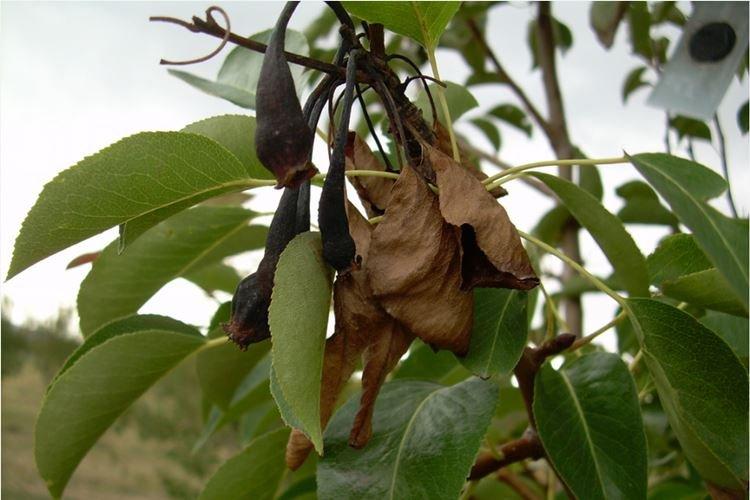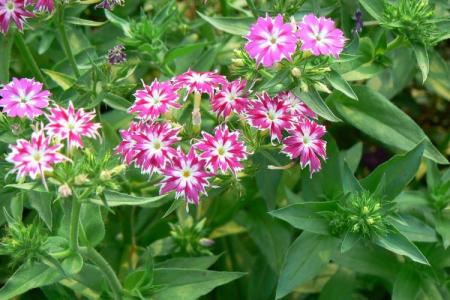
Like most fruit trees, pears are susceptible to various diseases, viruses and fungi. Although breeders are constantly working on new varieties with enhanced immunity, the ideal is still unattainable. Therefore, it is better to prepare and investigate possible problems in advance. And most of them first appear on the leaves!
Bumps and bumps on the leaves
Such small defects do not appear on the leaves very often, and this significantly limits the number of possible options. Most often the case is in pests or fungal spots.
- Phylostictosis is a common problem in pears and apple trees that appears as brown, bumpy specks. Later, the affected leaves dry and fly around;
- Small growths or galls remain on the leaves due to aphid infestation. While the eggs are developing, the adults drink all the juices from the plant;
- From a distance, the scale insects on the leaves resemble small yellowish tubercles. But in fact, these are garden pests, due to which in the future you can lose a luxurious crown.
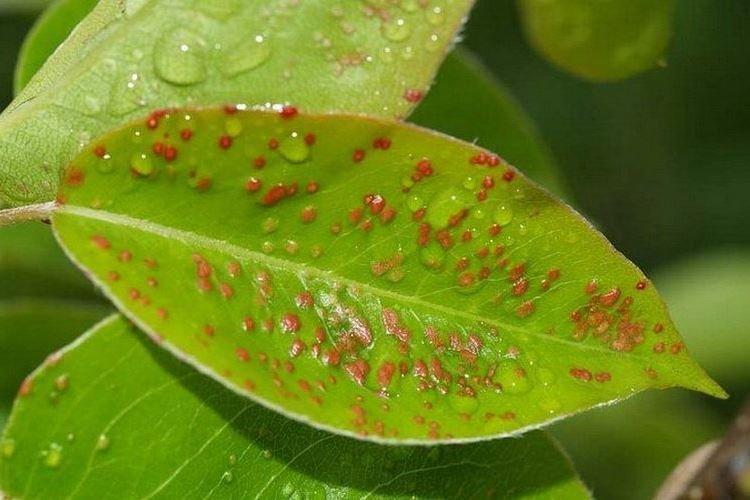
Leaves turn yellow and dry
The yellow leaves of a pear are a double-edged sword, because on the one hand, this is the most common and not too scary problem. On the other hand, there can be so many reasons for it that it is difficult to calculate the real one.
- In too dry season, pear leaves turn yellow and dry due to lack of moisture;
- After prolonged rains or as a result of overflow, the spots gradually darken, soften and rot;
- If you water a pear in the midst of a sunny day and wet the crown, dry yellow spots of burns may remain;
- Iron deficiency causes the leaves to turn yellow and dry from the tips. Less often, similar symptoms are observed with a deficiency of calcium and magnesium;
- If yellow spots randomly cover the entire leaf, like a mosaic, it may be an incurable virus of the same name.
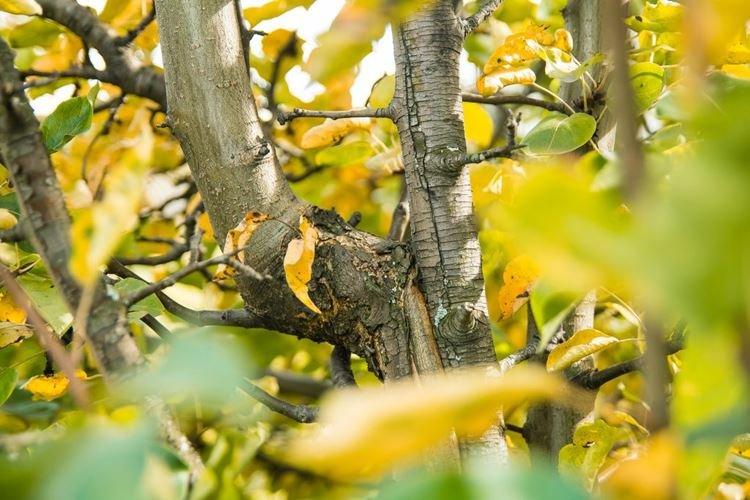
Brown spots on pear leaves
Red, red, brown, brown - these are only a small part of the shades of spots on pear leaves. But there is also an advantage - the more specific the problem looks, the easier it is to find the root cause!
- If you take care of poorly and do not thin out the crown in time, this is a sure way to the fungus Marsoniasis with brown spots;
- Brown spots on the leaves appear if the pear is acutely lacking in copper. This is due to a lack of fertilization or imbalance during feeding;
- The main enemy of all horticultural crops is scab, which affects all parts of the tree and fruits. The leaves are covered with dark spots of a complex olive shade, which gradually turns brown;
- Rusty chaotic spots on the plates - a symptom of a fungal disease under the eloquent name "rust";
- Due to septoria, complex two-color spots with a brown border and a whitish middle appear on the leaves. Later, the light part may dry out, fall out or crack;
- Red spot or polystygmosis - one of a dozen varieties of fungal spots, but this time with bright red spots.
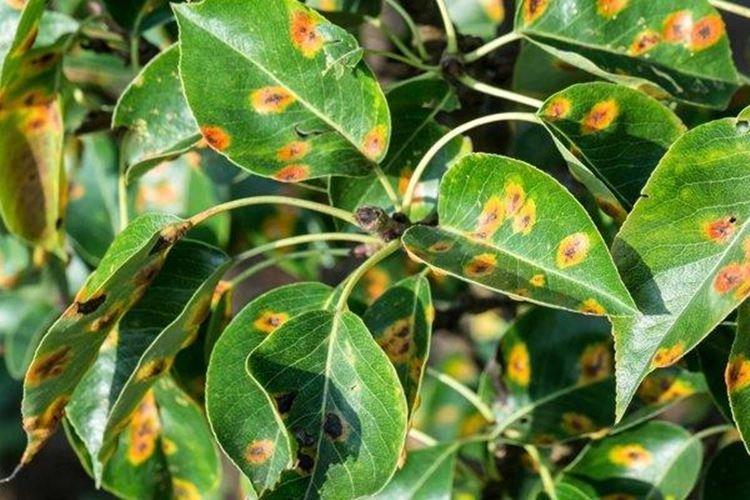
The leaves of the pear turn black
Blackness is a much more alarming symptom, because it often indicates irreversible processes. It is blackness that is a sign of tissue necrosis and pear cancers.
- Young pears can turn black due to improper irrigation regime, because seedlings are sensitive to external conditions;
- The same consequences appear if you feed a young tree with organic matter too abundantly or too early. It provokes burns of the root system;
- Black bloom on pear leaves is a symptom of a sooty fungus that successfully develops on sweetish secretions left by aphids;
- Black leaves, inflorescences and shoots - a consequence of a fire blight. The disease is most often spread by insects, like many other viruses or bacteria;
- When a black cancer is affected, pear leaves first become covered with brown spots, and at the next stage black dots form on them.
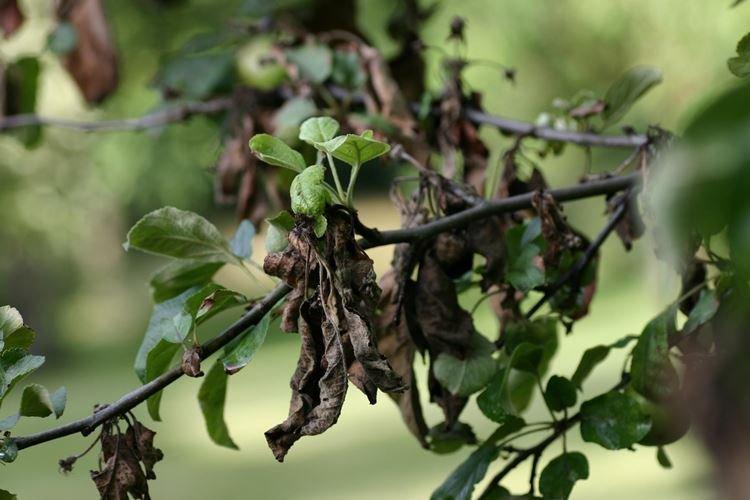
White bloom on pear leaves
White plaque has only two variants of origin - it can be myceliums and spores of the fungus, or the cobweb that some insects leave.
- The first and main reason is powdery mildew or the most common fungus that blooms on warm, humid days;
- Milky shine is a disease of fruit crops, due to which the leaves appear dull, with a white-silver overflow;
- The spider mite leaves abundant white cobwebs everywhere, which inexperienced gardeners confuse with ordinary spiders. But it becomes more and more, and small black insects appear on the leaves;
- Fruit moth more often infect apple trees, but it also lives on pears. It eats away all the pulp from the leaves to the shell, and in the process of its life it also leaves a whitish cobweb.
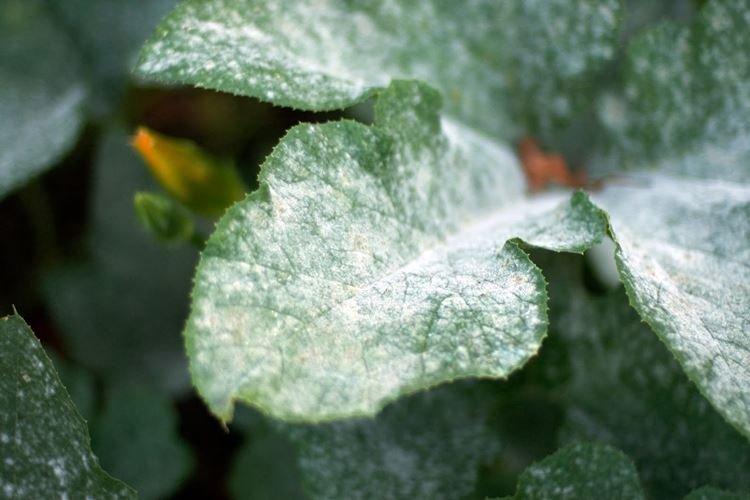
Pale and light leaves
If the leaves lose color, this is a sure sign of chlorosis, which also has completely different causes. There is a violation of agricultural technology, and much more serious deviations in development.
- If the pear lacks nitrogen, it will not be able to build up a strong and healthy green mass;
- When using spot fertilizers, it is easy to disrupt the balance of trace elements, and this also affects the state of the leaves. Therefore, it is recommended to take complex mixtures, especially for beginners;
- Any violations of agricultural technology lead to chlorosis - excess or lack of sun, improper watering, sudden temperature changes. Young pears are especially sensitive, but most often, after the normalization of care, they recover on their own;
- The fruit mite overwinters safely on a tree or in dry leaves, and in early spring drinks the juices from the buds that are incipient. Leaves bloom weak, faded and lethargic.
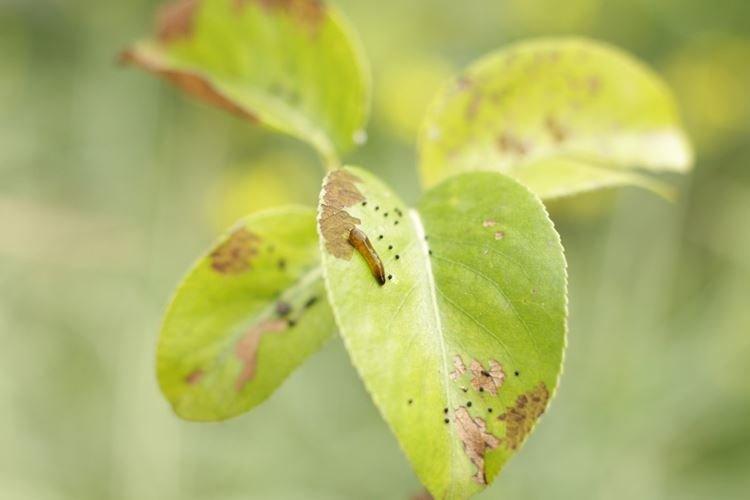
Pear leaves curl
In some cases, the leaves not only change color, but also become deformed. They curl up into tubes, bend to the sides, grow too narrow or irregular in shape.
- Pear leaves resemble a curved boat, when sucking pests hide on the back of the plate;
- Copperheads drink the juices of the plant and leave small sticky drops in the process. Because of them, the leaves stick together in the most bizarre forms;
- The leaf roll got its name for a reason, so when the leaves of the pear are rolled into tubes - check if there are any caterpillars;
- Curl is a viral disease that provokes deformation of leaf plates. In the future, it affects the harvest and the development of the tree as a whole;
- Small-leaved and other similar viruses operate on the same principle. Leaves become smaller, curved, grow incorrectly. Most viruses are incurable, so it is important to protect the rest of the trees.
